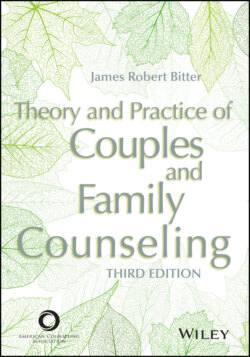Читать книгу Theory and Practice of Couples and Family Counseling - James Robert Bitter - Страница 28
Postmodern, Social Constructionist, and Narrative Approaches to Family Counseling
ОглавлениеKey figures: Tom Andersen, Harlene Anderson, David Epston, Kenneth Gergen, Harold Goolishian, Stephen Madigan, Michael WhiteThese models that ushered in the postmodern era in family counseling— narrative approaches to family counseling—were first introduced Down Under when Michael White and David Epston began to think of families as living out narratives often imposed on the system. Using externalization, unique events, and reauthoring interventions, narrative therapists seek to separate clients from problem-saturated stories and to cocreate stories of competence and capabilities. Counselors who use postmodern, social constructionist approaches often adopt what Harlene Anderson and Harold Goolishian called a decentered or not-knowing position characterized by interest, curiosity, and inquiries about the next most interesting development. Reflecting teams are used in each of these models to add diverse, multiple voices and perspectives to the process of counseling. Tom Andersen from Norway was the first to design reflecting teams. The purpose of the reflecting team is to provide an audience for counseling that will respond from multiple perspectives and give families many different lenses from which to view their struggles and successes.
